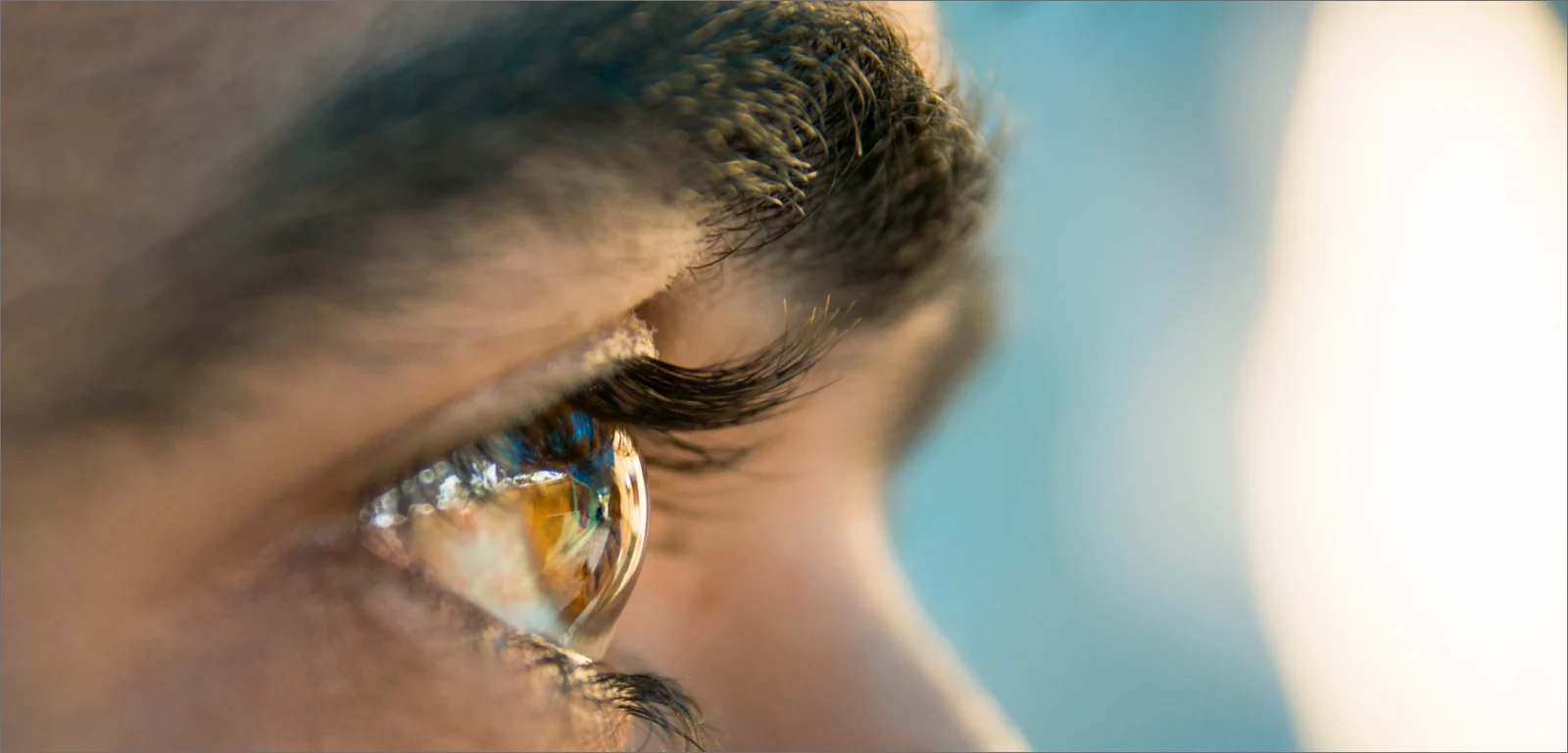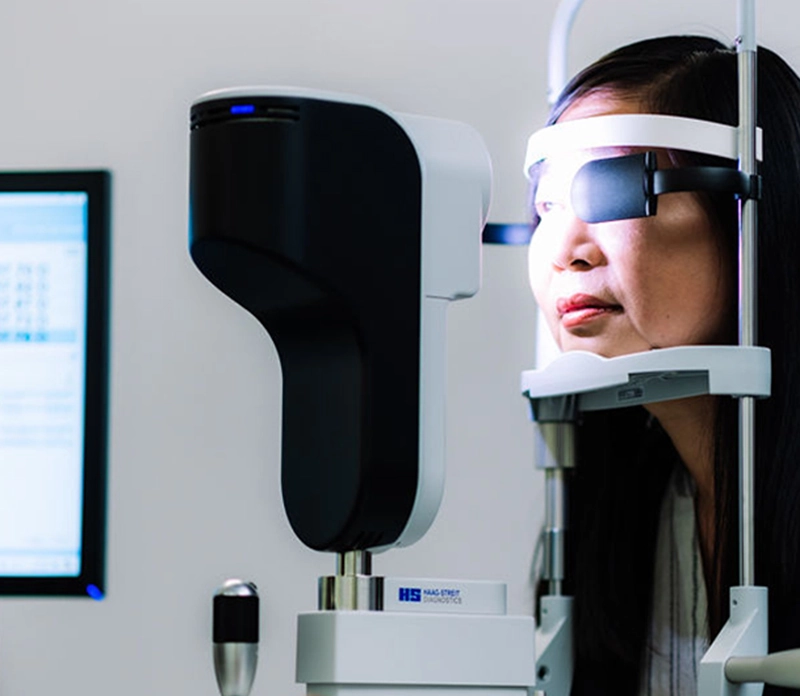
Intense Pulsed Light Therapy for Dry Eye
Intense Pulsed Light Therapy for Dry Eye
What is Intense Pulsed Light Therapy
Intense Pulsed Light is a type of light therapy that was traditionally used by dermatologists to treat sun-damaged skin and other signs of aging. IPL delivers light of different wavelengths to the target area.
IPL is not a laser therapy but is often mistaken as one. In fact, IPL is simply a device that emits pulses of light of varying wavelengths. IPL emits light of wavelength 500 to 1200nm, but this can be altered to the desired wavelength.
Recently, IPL has been used to treat dry eye disease caused by dysfunctional or clogged eye glands. It does so by delivering light of various pulses to the meibomian glands located at the upper and lower eyelids in order to release hardened oils that have clogged the glands.
Furthermore, IPL can also minimize redness and promotes normal gland functioning.


Dry eye disease (DED) is a common eye condition in which a deficiency of tear production results in uncomfortable and often painful symptoms that can even impact vision. Although it is a fairly common condition, it can significantly impair quality of life and also restrict normal day-to-day activities.
If you have dry eye disease, you may experience symptoms such as a foreign body sensation in the eye, itching, redness, blurred vision, pain, and increased light sensitivity.
Although dry eye disease may be caused by aging, use of certain drugs, systemic inflammatory diseases, and dry environment, the commonest underlying mechanism of dry eye is a dysfunction of the glands that produce tears. For instance, in meibomian gland dysfunction (MGD), there is a chronic and diffuse abnormality of the meibomian glands such as duct obstruction or abnormal changes in glandular secretion.
This dysfunction results in a deficiency of one of the components of the tear film, which reduces its ability to effectively perform its function of lubricating the eyes.
Meibomian Gland Dysfunction and Dry Eyes
Meibomian glands synthesize the lipids in the eye, which combine with other substances in the eye area such as oil, mucus, and water to create a thin film that provides lubrication to our eyes. The lipids synthesized by the meibomian gland are essential to prevent evaporation of the eye’s tear film.
Meibomian gland dysfunction occurs when the meibomian glands fail to produce lipids in enough quantities. This can cause the tear film to evaporate at a faster rate, making the eyes dry and uncomfortable.
80% of dry eye cases are caused by a combination of defects including deficient production of tears and excessive evaporation. Meibomian gland dysfunction can result in excessive evaporation, which can, in turn, result in chronic dry eye syndrome.
Meibomian gland dysfunction can present differently and to varying degrees of severity in different people. Some may need mild treatment while others may require more intense care.
Until recently, the treatment options for this condition have been limited to tear substitutes, warm compresses, meibomian gland expression, probing, topical anti-inflammatory agents, and oral antibiotics. However, despite the numerous available treatment options, many patients with dry eye disease do not get complete or long-term relief from their symptoms.
IPL therapy is a relatively new treatment option for people with dry eye disease. It’s non-invasive nature, and ability to target the underlying cause of dry eyes has increased its use and preference among ophthalmologists.

IPL Treatment for Dry Eye Disease
It is now understood that inflammation is a key underlying cause of dry eye disease. IPL utilizes light waves of specific wavelengths to shrink tiny blood vessels, which can thus suppress the leakage of proteins responsible for inflammation. By doing so, significant control over inflammation can be achieved with the corresponding improvement in symptoms of dry eye.
Furthermore, the thermal pulses can also help alleviate symptoms in some patients. In meibomian gland dysfunction, a state of chronic inflammation can result in a change in lipid composition. This change converts the oils to monounsaturated fatty acids, which increases the melting of the lipid to 45ºC, which is slightly higher than the normal body temperature of 37ºC. This makes the lipids assume a more solid form that can then easily clog the gland ducts.
When thermal pulses are applied to the tear glands, the heat and pressure from the pulsation can melt the lipids so that they form a part of the tear film as they normally should. By unclogging the meibomian gland, IPL therapy can be a non-invasive and comfortable alternative for treating dry eye diseases caused by meibomian gland dysfunction.
An alternative to IPL therapy is a manual expression of the meibomian glands, but this process is not as effective and is also quite uncomfortable.
Suitable Candidates for IPL Therapy
IPL is a relatively safe and non-invasive treatment. Anyone with dry eye disease caused by meibomian gland disorder can be a suitable candidate for IPL therapy.
Treatment of chronic dry eyes through IPL has been found to be effective for people diagnosed with:
- Meibomian gland dysfunction (MGD)
- Bacterial infections or eyelash mites of the eyelids.

What To Expect During IPL Therapy
IPL therapy is an outpatient procedure, but you have to follow some guidelines prior to making a visit to the eye doctor’s office. For instance, patients must ensure that there is no makeup covering the skin around the eye.
During the procedure, special goggles are applied over the patient’s eyes to protect them. Then, a conductive gel is placed beneath the eyelid area to ensure an even spreading of the pulsed light. About 5 to 6 flashes of light are applied beneath the eyelid area to stimulate the normal functioning of the meibomian glands. This session normally only takes around 10 minutes. For best results, treatment should be applied on day 1, day 15, and day 45, and then further treatments can be done as needed.
Treatment may also be administered in conjunction with meibomian gland expression or other recommendations from your ophthalmologist, including treatments you can do at home to ensure optimal results. Patients can go home on the same day as the procedure, although a strict self-care routine is required.
After IPL therapy, you should make sure that you follow some precautions at home yourself. These include:
- Avoiding exposure to sunlight for about 1 week
- Applying sunscreen, SPF 50 or more, 4 times daily
- Taking medications strictly as prescribed
FAQs About Intense Pulsed Light Therapy
Treatment is non-invasive and patients typically experience relief within a few minutes. However, maximal improvement is typically seen after the third treatment on day 45 or subsequent treatments if required.
Some patients with dry eye disease may not be suited for IPL therapy. Some conditions in which IPL is best not used are in people with:
– Pregnancy
– Fitzpatrick skin type 5 and 6 (Darker skin type)
– Xeroderma
– Keloid scarring under the eyelids
– Lupus infection
It is also important to avoid exposure to UV light through sunlight, tanning beds or any other sources before treatment. Although it is not a contraindication, IPL should not be directed close to moles, pigmentations, or tattoos as they may absorb most of the light.
Side effects of IPL therapy are only temporary and are usually mild. Some common side effects seen in patients who have undergone IPL therapy are mild redness, darkening of freckles for a few days after treatment, and in some cases crusting of skin around the treatment, area may also be seen.
Many of the treatments for dry eye disease, such as eye drops, artificial tears, hot compresses, and eyelid scrubs are meant to temporarily relieve symptoms instead of treating the root cause of the condition.
IPL is unique in that it targets the source, the blood vessels surrounding the glands, which enables them to secrete oils naturally and resume their moisturizing function. This not only relieves symptoms but also slows the progression of chronic dry eye.
Results can vary from one person to another, but most patients report significant improvement in dry eye symptoms for at least one week after IPL. This improvement is noticed by patients on the same day of treatment. However, there may be a gradual regression of these results until the next treatment.
For best results, at least four sessions of IPL spaced 2 to 4 weeks apart are recommended for treating dry eyes. After completion of the 4 treatment sessions, maintenance treatment can be done at 6 months to one-year intervals. Results seen after the 4 sessions last several months.
With appropriate safety measures such as a goggle or shield to protect the eyes, IPL therapy is quite safe. But, it is extremely important that the shield be kept in place and not shifted during treatment. This is because, although IPL is not a laser, it still has the potential to damage the retina or the iris if they are not shielded properly.
The actual treatment procedure with IPL takes only 10 minutes. But, you may need to come in a little early to prepare for the procedure, and for aftercare. Overall, you may be at the eye doctor’s office for 1 to 2 hours for each IPL appointment.
Unfortunately, IPL therapy for dry eyes is currently not covered by insurance. As IPL therapy is a relatively new treatment and is considered an elective procedure, insurance providers do not cover this procedure.
No, IPL therapy and meibomian gland expression are not the same. During IPL, pulses of light are directed towards the meibomian gland to stimulate and allow the easier opening of the clogged glands whereas meibomian gland expression is a manual procedure to release the clogged glands.
There is no permanent cure for dry eyes, but with IPL therapy, symptomatic relief can be achieved for several months. You can also use other treatments such as artificial tears in conjunction with IPL therapy to treat dry eyes.
FDA has approved IPL therapy for the treatment of dry eyes after studies reported significant improvement and long-term control of dry eye symptoms after IPL therapy. The FDA has given de novo authorization to Lumenis IPL for treating dry eye disease caused by meibomian gland dysfunction.
IPL therapy is used for treating a number of skin conditions such as sun damage, and signs of aging. More recently, IPL therapy is also used to treat dry eyes caused by meibomian gland dysfunction.


Are You a Candidate for
Vision Correction?
Whether you just need a general eye exam, or if you are interested in reducing or eliminating your need for glasses or contacts, our team is here to help! Contact us to book an appointment today!
The doctors at Focus Eye Care & Surgery have reviewed and approved this content.
Page Updated:


